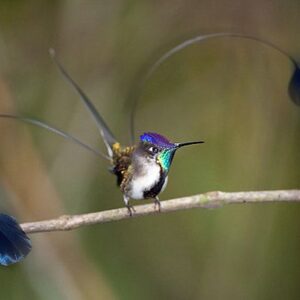A highly menacing look with his low neck and long fleshy wattle, but don’t worry he means you no harm.
Meet the King Vulture
The king vulture (Sarcoramphus papa), is a large bird found in Central and South America. It is a member of the New World vulture Cathartidae family. The king vulture is the largest of the New World vultures. The wattle is officially called the caruncle, and scientists still haven’t figured out what its purpose actually is.
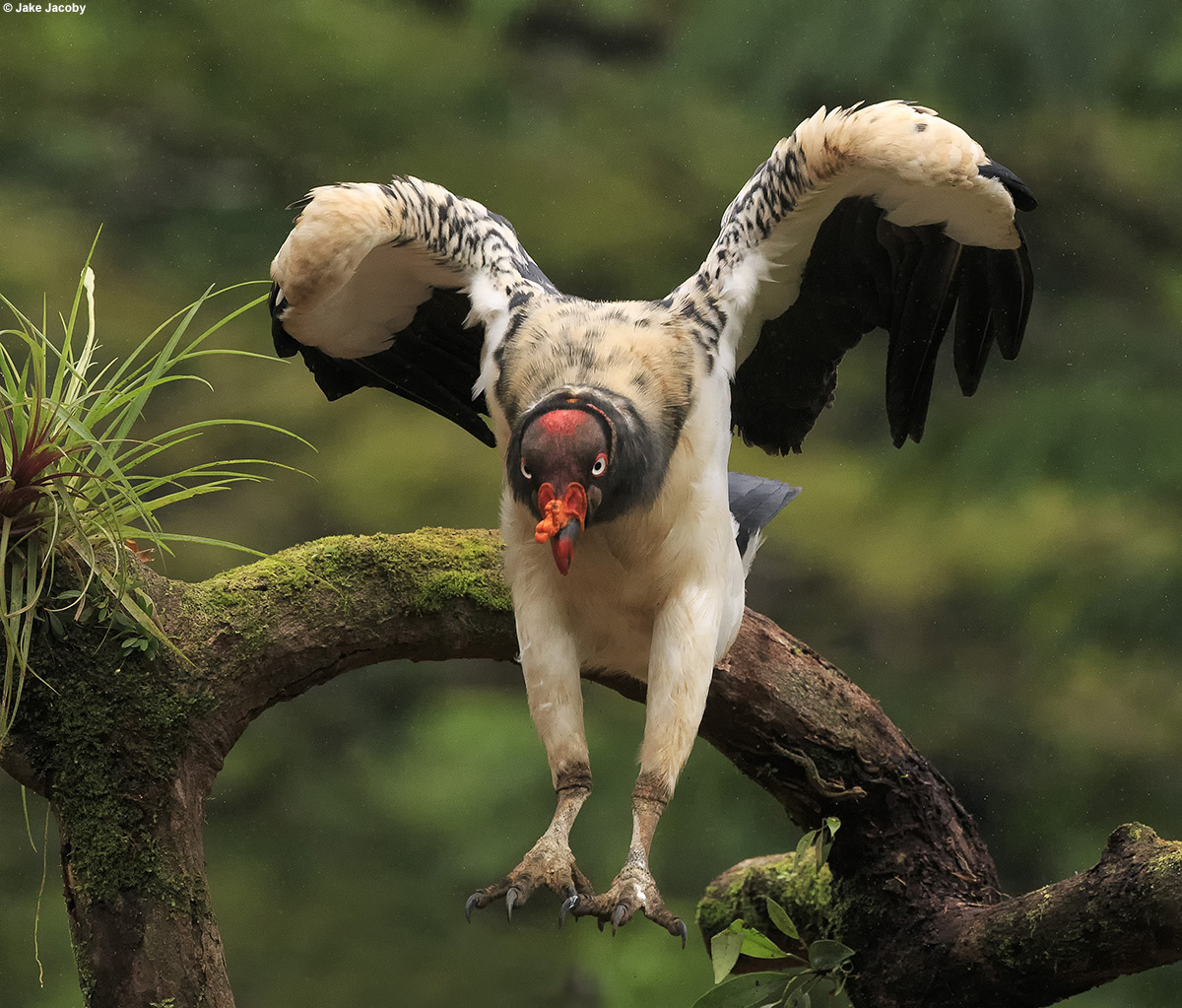
Males and females are virtually identical, both having thick claws and very keen eyesight.
Unlike the poor eyesight of many other vultures.
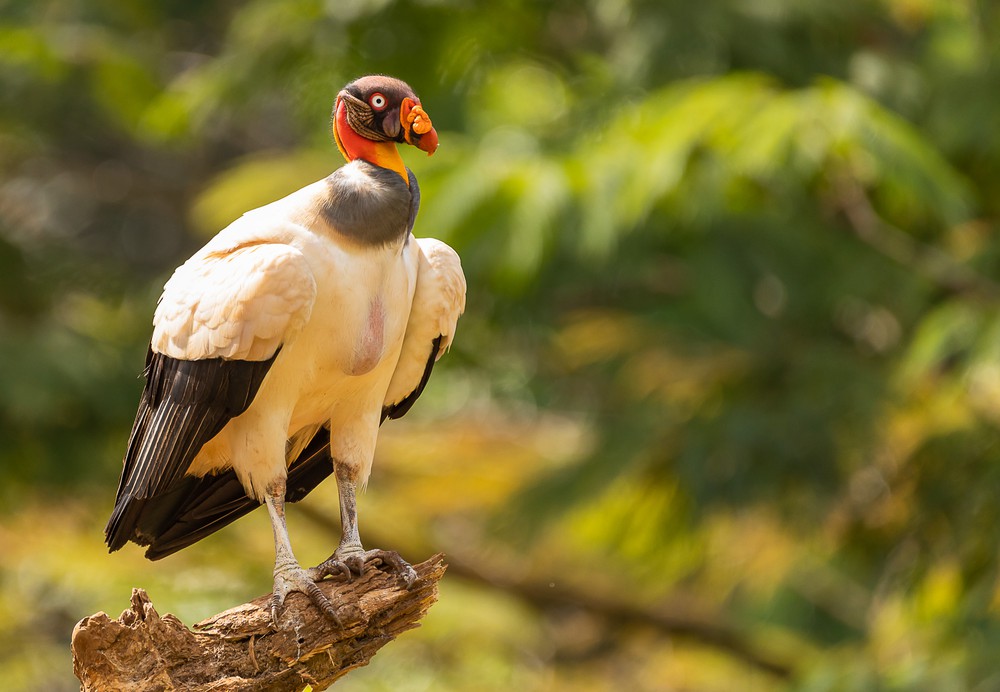
Not only named the king of the vultures, but the king vulture also eats like a king.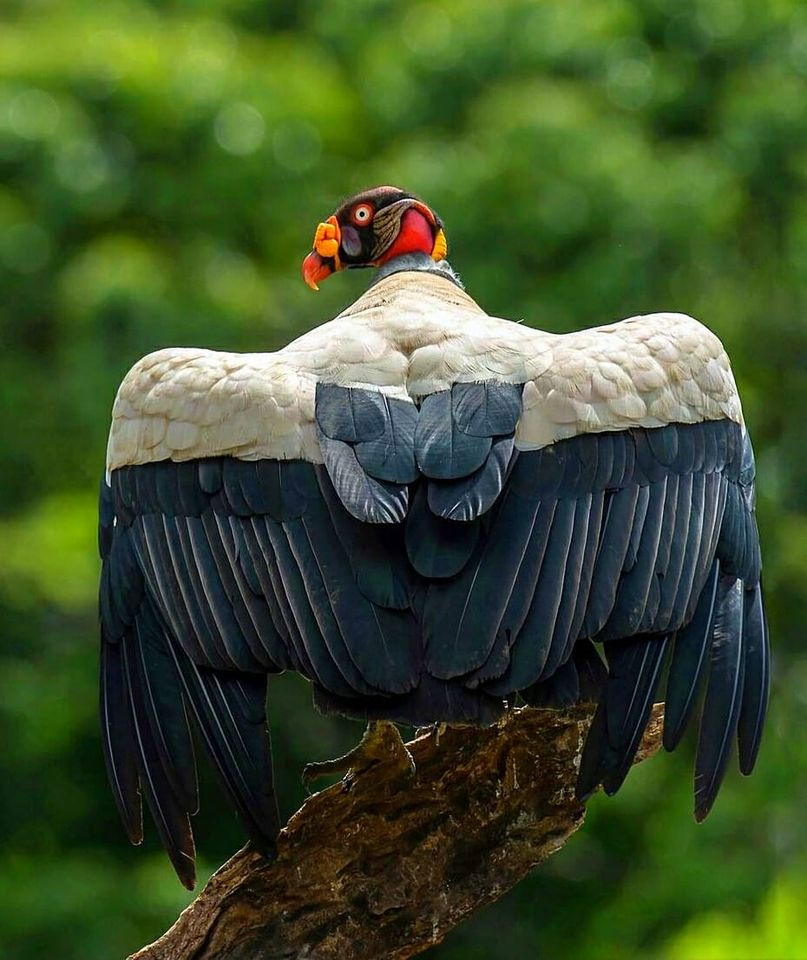
Whenever a King vulture lands at a feeding site, all the smaller vultures move right out of the way letting the King vulture eat first!

The king vulture eats anything from cattle carcasses to beached fish and dead lizards. Principally a carrion eater, there are isolated reports of it killing and eating injured animals, newborn calves, and small lizards.
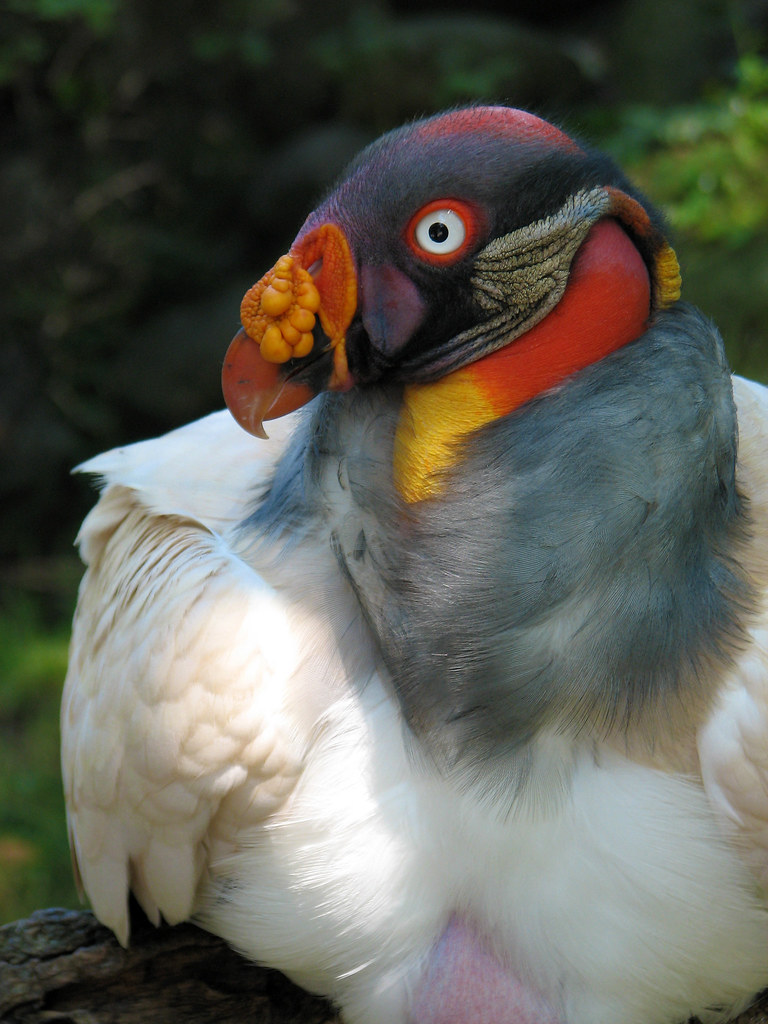
“20090727 king vulture” by schizoform is licensed under CC BY 2.0.
The adult king vulture sexually matures when it is about four or five years old, with females maturing slightly earlier than males. The birds mainly breed during the dry season. A king vulture mates for life and generally lays a single unmarked white egg in its nest in a hollow in a tree. To ward off potential predators, the vultures keep their nests foul-smelling. Both parents incubate the egg for 52 to 58 days before it hatches. If the egg is lost, it will often be replaced after about six weeks. The parents share incubating and brooding duties until the chick is about a week old, after which they often stand guard rather than brood. From one to three months of age, chicks walk around and explore the vicinity of the nest, and take their first flights at about three months of age.
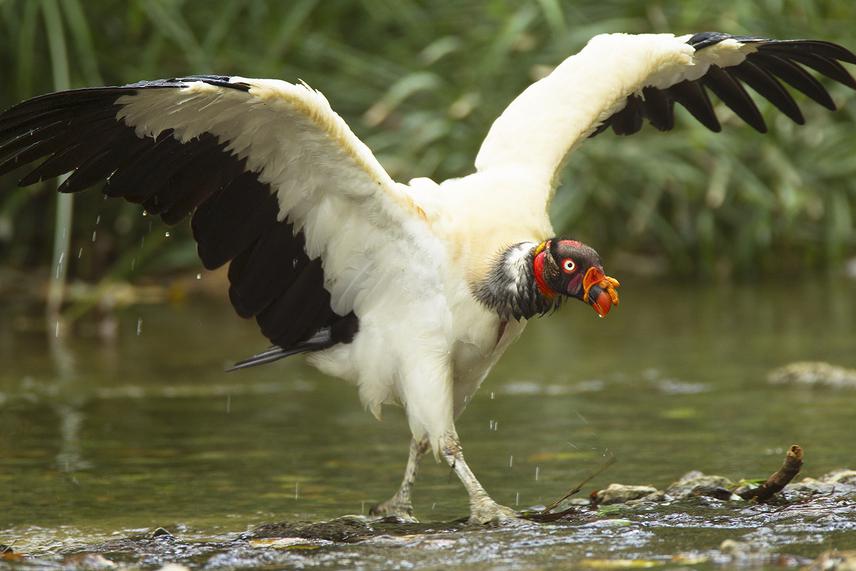
This bird is a species of least concern to the IUCN, with an estimated range of 14 million square kilometers (5,400,000 sq mi) and between 10,000 and 100,000 wild individuals.
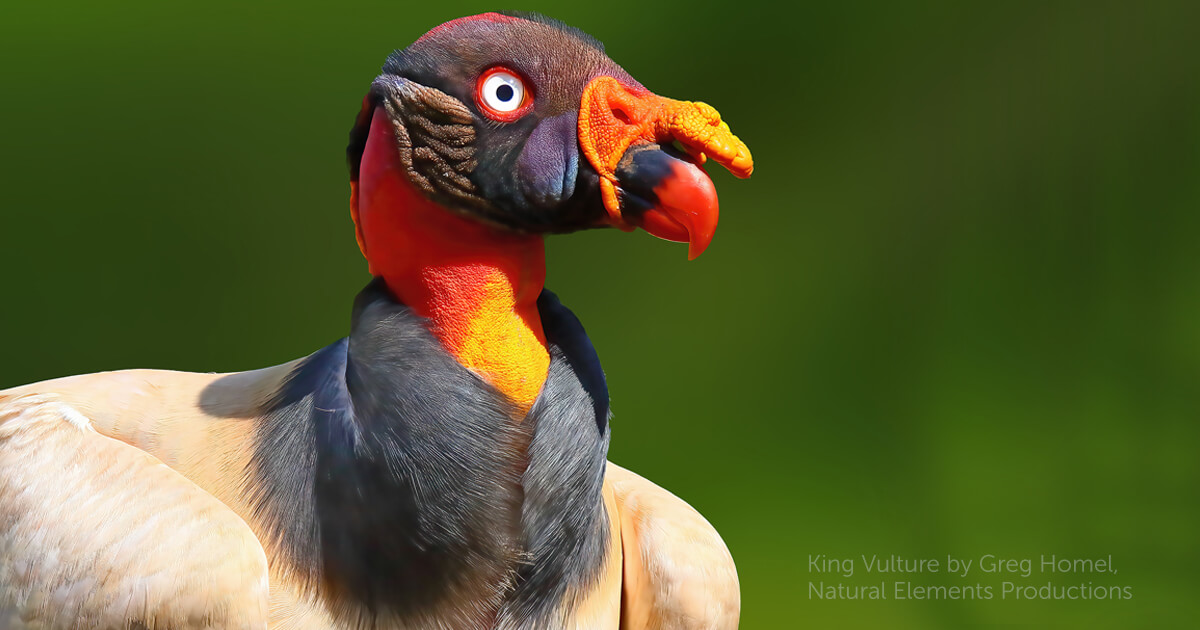
Watch and listen to this bird right here in the video below:




